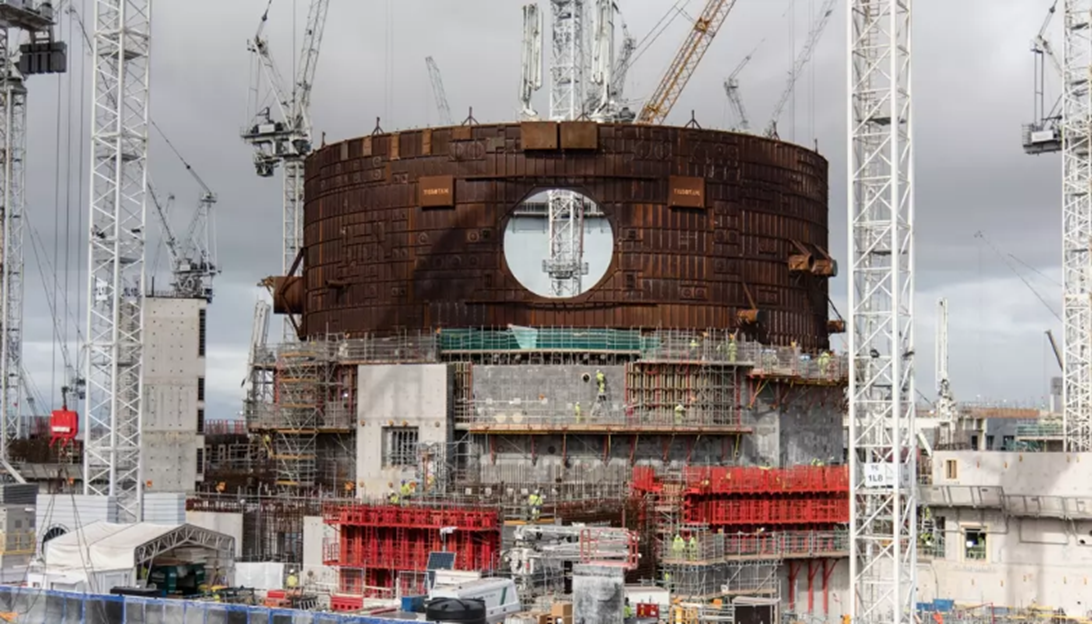IAEA director general Rafael Mariano Grossi addresses workshop attendees. (Photo: IAEA)
The International Atomic Energy Agency convened a workshop last week to explore how nuclear techniques backed by the IAEA’s Zoonotic Disease Integrated Action (ZODIAC) initiative could be used to avoid outbreaks of monkeypox and Lassa fever. The meeting, held in Vienna, Austria, on the sidelines of the IAEA Board of Governors meeting, was organized to assist countries in using nuclear and related techniques to detect, mitigate, and understand the behavior of the viruses.
“It is important that we are reacting quickly, as things happen. I am happy that concrete work is being carried out on something before it becomes a very difficult problem,” said IAEA director general Rafael Mariano Grossi as he opened the one-day summit.
Hinkley Point C’s Unit 2, in March of this year. (Photo: EDF Energy)
The target date for the start of electricity generation at Hinkley Point C’s Unit 1 reactor has been moved back to June 2027, following the completion of a schedule and cost review of the new nuclear build project, EDF announced last week.
While the review considered the main aspects of the project to construct two 1,630-MWe EPRs in Somerset, England, the schedule and cost of electromechanical works and of final testing were not examined, according to the utility.
Vogtle Units 3 and 4, earlier this month. (Photo: Georgia Power)
Georgia Power yesterday announced that due to 'productivity challenges' and the need for 'additional time for testing and quality assurance,' it has revised the schedule for the Vogtle-3 and -4 nuclear expansion project. The new schedule pushes back the Unit 3 in-service date to the second quarter of 2022 and the Unit 4 date to the first quarter of 2023—a three-to-four-month shift for each unit.
 The Nuclear Regulatory Commission last Friday announced the publication of its ninth report to the Convention on Nuclear Safety, describing the federal government’s actions under the convention to achieve and maintain safety for the nation’s nuclear power reactor fleet.
The Nuclear Regulatory Commission last Friday announced the publication of its ninth report to the Convention on Nuclear Safety, describing the federal government’s actions under the convention to achieve and maintain safety for the nation’s nuclear power reactor fleet.







 Nuclear power plants around the world generated 2,553 TWh of electricity in 2020, a drop of 104 TWh from 2019’s total, according to
Nuclear power plants around the world generated 2,553 TWh of electricity in 2020, a drop of 104 TWh from 2019’s total, according to 









